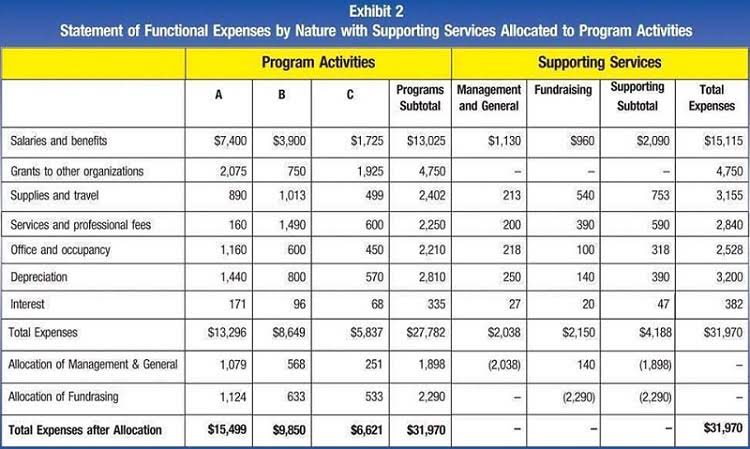
A reversing entry is an accounting entry that is made at the beginning of an accounting period to reverse the effects of a previous adjusting entry. The main purpose of a reversing entry is to ensure that the revenue and expense accounts are in balance. Generally, a company will only make reversing entries are optional reversing entries if it uses accrual basis accounting. The main purpose of reversing entries is to ensure that the revenue and expense accounts are in balance. Without reversal entries, the balances in these accounts may not be accurate, which could lead to incorrect financial statements.
And, as we’ve seen in many Hollywood films, bad things happen when you try to mess with the past.
AccountingTools
In each case at the end of month 2, the balance on the wages expense account is 2,500, and the balance on the wages payable liability account is nil. The purpose of reversing entries is to cancel out certain adjusting entries that were recorded in the previous accounting period. With automatic reversing entries, your accounting software will automatically make a journal entry at the end of the month and record a reverse entry at the start of the new month.

Then, when the bill comes in for $9,500, you record a new journal entry for $9,500 in consultant fees and accounts payable. To illustrate, let’s assume that on July 1, 2023 you purchased a 12-month insurance coverage plan starting July 1 and paid an upfront fee of $60,000. Below we’ll discuss how to record reversing entries and which method it could be applied.
The 3 Legal Forms of Business
If Paul does not reverse last year’s accrual, he must keep track of the adjusting journal entry when it comes time to make his payments. Since half of the wages were expensed in December, Paul should only expense half of them in January. If the accountant did not make a reversing entry at the beginning of the year, the accountant will have this entry upon collection of the income. What was debited is now credited and what was credited is now debited.
For the current period, he would just have to record the expenses and revenue as they come in and not worry about the accrued and prepayments of the last period. Having a rent income account with a debit balance may seem odd at first, considering that income accounts normally have credit balances, but this would make sense once you’ve made the entry to collect the rent. A reversing entry is a journal entry made in an accounting period, which reverses selected entries made in the immediately preceding period. The reversing entry typically occurs at the beginning of an accounting period.
Do Accrued Expenses Reverse Year End Closing?
An example of a reversing entry would be an accounting entry made to reverse the effects of a previous adjusting entry that was made for accrued revenue or prepaid expenses. A reversal entry would create a negative amount in the respective revenue and expense accounts. For accrual basis accounting, a company will only make reversing entries if it uses this method of accounting. A closing entry marks the end of an accounting period and is used to transfer the balances in the revenue and expense accounts to the retained earnings account.
In this scenario, Company X can simply make a reversing entry at the beginning of the November accounting period. The reversing entry will decrease wages payable by $600 and decrease wages expense by $600. Then, when the November payroll is paid in whatever amount, it can be recorded by increasing (debiting) wages expense and decreasing (crediting) cash with the total amount paid. Reversing journal entries take care of this, so the bookkeeper doesn’t have to make this weird entry. The reversing entry cancels out the adjusting enter by reversing it. In other words, on January 1 the bookkeeper records a debit to credit to the expense account and a debit to the accrual account.
How to Fix an Incorrect Trial Balance
They reduce the likelihood of duplicating revenues and expenses and committing other errors. It is extremely easy to forget to manually reverse an entry in the following period, so it is customary to designate the original journal entry as a reversing entry in the accounting software when it is created. The software then automatically creates the reversing entry in the following period. Thus, manual reversing entries are much more prone to errors that automated reversing entries. The adjusting entry reduces the unearned revenue liability by $3,600 resulting to a credit balance of $2,400.
- When the full amount becomes earned by February 29, there’s no need for you to record it anymore.
- When the remaining $30,000 insurance expires on June 30, 2024, no adjusting entry is necessary since the amount was already recognized as expense when we recorded we posted the reversing entry on January 1, 2024.
- The key indicator of this problem will be an accrued liability of $20,000 that the accounting staff should locate if it is periodically examining the contents of the company’s liability accounts.
- He has worked as an accountant and consultant for more than 25 years and has built financial models for all types of industries.
- If you have more than one person working with your accounting software, reversing entries can help you avoid errors due to miscommunication.
- So, these are some tips you shouldc follow while making reversing entries.